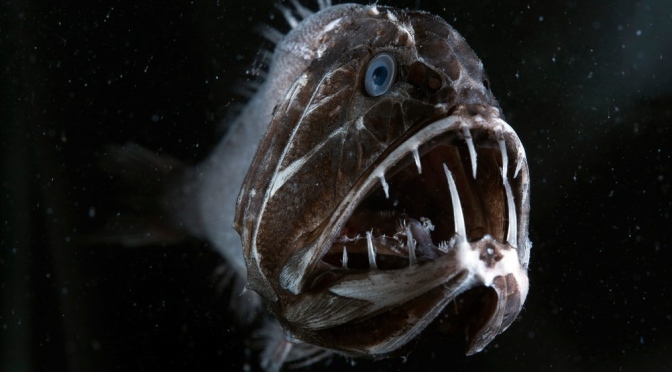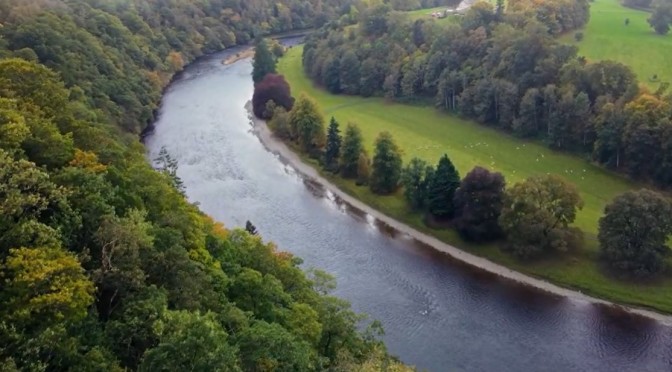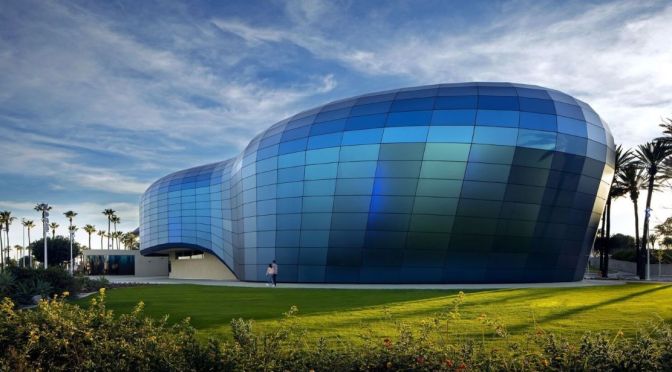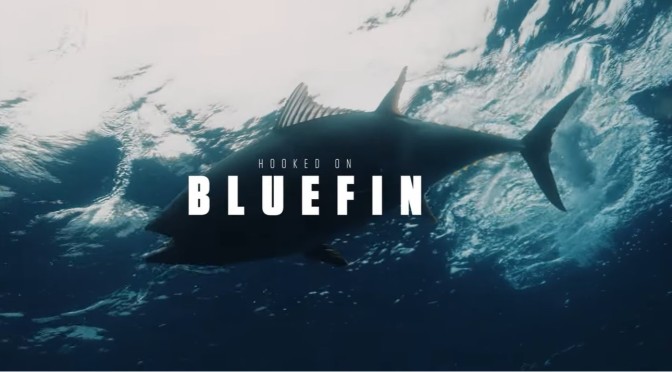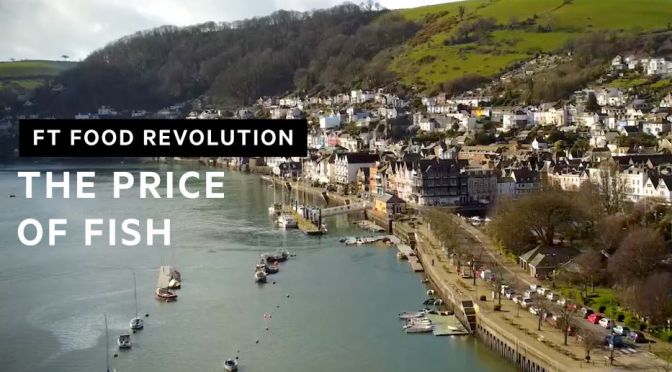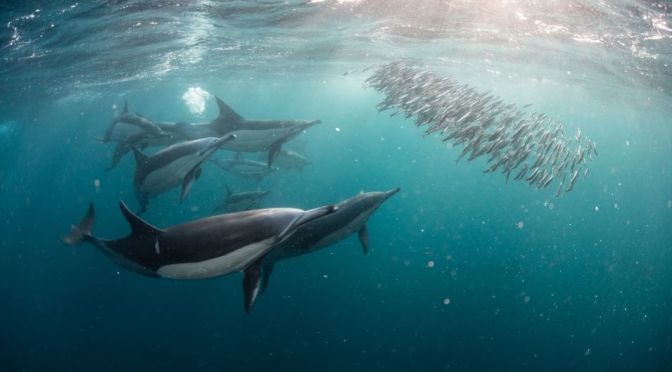Bon Appétit (September 12, 2023) – Japanese chef Yuji Haraguchi, owner of OKONOMI // YUJI Ramen in New York, demonstrates how he butchers an entire kampachi and transforms it into six varied dishes.
Tag Archives: Fish
Oceans: Marine Life In The Midnight Zone (BBC Earth)
BBC Earth (June 28, 2023) – A kilometre beneath the surface and beyond the reach of the sun, life can still flourish in this dark expanse.
The midnight zone is the single largest habitat on the planet, accounting for 70% of all seawater, but because of its remote location, it is poorly understood. Little is known about the animals that inhabit these waters, and even less is known about microbial life in this zone.
Views: Whale Sharks Off Coast Of Cancun, Mexico
CBS Sunday Morning – We leave you this Sunday morning with whale sharks near Holbox Island off the coast of Cancun, in Mexico. Videographer: Lance Milbrand.
As the largest fish in the sea, reaching lengths of 40 feet or more, whale sharks have an enormous menu from which to choose. Fortunately for most sea-dwellers—and us!—their favorite meal is plankton. They scoop these tiny plants and animals up, along with any small fish that happen to be around, with their colossal gaping mouths while swimming close to the water’s surface.
Filter Feeding
The whale shark, like the world’s second largest fish, the basking shark, is a filter feeder. In order to eat, the beast juts out its formidably sized jaws and passively filters everything in its path. The mechanism is theorized to be a technique called “cross-flow filtration,” similar to some bony fish and baleen whales.
Ecology: Planting Trees To Cool Scotland’s Rivers
The Woodland Trust – River woodland is key to tackling
the twin climate and biodiversity crises – reducing flooding, improving river health and restoring the ecosystem. We’re working in England, Scotland, Wales and Northern Ireland to plant and restore river woodland for people and wildlife.
In Scotland, this particularly means fish. Salmon, to be exact. Whole upland river catchments devoid of trees are seeing Scotland’s rivers warm to a point that could see salmon disappear in just 20 years. These fish need clean, cold water to thrive, and river woodland is the way to return it to them. The Woodland Trust is working across river catchments to expand native woodland alongside rivers and burns.
Trees provide shade and cover for young salmon and trout, stabilize riverbanks, slow the flow of water downstream and create wildlife corridors. A key part of this work involves working with landowners to plant and restore river woodland on their land, advising on the initial planting and empowering them to monitor their river woods into the future.
Ocean Views: Aquarium Of The Pacific In Long Beach
AQUARIUM OF THE PACIFIC – THE WORLD’S LARGEST OCEAN AQUARIUM OF THE PACIFIC LONG BEACH MEET MORE THAN 12,000 SPECIES.
In the Southern California/Baja Gallery, you can meet giant sea bass, leopard sharks, eels, seals, sea lions, white abalone, and other species found locally or in Baja. Explore the cold-water habitats of the Northern Pacific Gallery to meet playful sea otters, diving birds, sea jellies, giant spider crabs, and other animals. Travel through the Tropical Pacific Gallery to see colorful fish and other species that inhabit those warm tropical waters.
Visit the Aquarium’s latest expansion—Pacific Visions. The 29,000-square-foot sustainable expansion includes an art gallery, orientation gallery, the Honda Pacific Visions Theater multimedia experience, and the Schubel Family Culmination Gallery, which features interactives, displays, educational game tables, and live animal exhibits.
Views: History Of New York’s Fulton Fish Market
The Fulton Fish Market in New York is celebrating its 200th anniversary this year. Jeff Glor goes inside and takes a look at the market’s history.
Opened in 1822, New York City’s Fulton Fish Market is one of the oldest fish markets in the United States. Well before the Brooklyn Bridge was even built, the market at South Street Seaport thrived with fishing boats and fishmongers bartering and bantering over stalls heaving with fresh fish. Each night the colorful market would come to life with its cast of characters, eager chefs and curious tourists, all mingling over bushels of oysters, crates of lobsters and a kaleidoscope of sea creatures from near and far. Perhaps more than any other institution, the Fulton Fish Market captured the spirit and tradition of old New York.
Missouri Views: Rainbow Trout At Roaring River
“Sunday Morning” takes us swimming with rainbow trout at Missouri’s Roaring River State Park. Videographer: Scot Miller.
Located in the southwest Ozark hills, Roaring River State Park is one of three state parks stocked with rainbow trout. Eager anglers flock to the park year-round to try and catch their lunker trout.
Ocean Sports Fishing: ‘Hooked On Bluefin’
“They’re the biggest, baddest fish in the ocean. They will break your heart, they will break your soul, they will break your back, they’ll break your gear. It’s an emotional rollercoaster.”
Costa Films’ “Hooked on Bluefin” unpacks the centuries-old culture of fishing for bluefin tuna — one of the most highly-valued gamefish on the planet. A coast-to-coast adventure, this film explores everything it takes to bring one of these mighty fish from ocean to table.
Food: Sourcing Local Fish In Southwest England
The war in Ukraine has hit the supply of grains and vegetable oils, while around 70% of the world’s cod and haddock comes from Russian boats. Global food prices are soaring and some restaurateurs fear a plate of cod and chips could rise to £20. The FT’s Daniel Garrahan and food writer and restaurateur Tim Hayward travel to England’s south west coast to see how two restaurants which source local, sustainable fish are coping with inflationary pressures.
Filmed by Petros Gioumpasis and Richard Topping. Edited by Richard Topping. Produced by Daniel Garrahan and Tim Hayward.
Oceans: Long-Distance Marine Migrations (Video)
Migrations are a key to survival in the marine ecosystem. From whales and turtles to sardines, by travelling to different locations, nektonic animals stand better chances of finding food or a suitable place to breed and raise their young. In this video, we’ll take a look at the migrations of nektonic organisms – animals that are able to actively swim and can undertake large-scale journeys around the world, covering larger distances than plankton and their predators.
Video timeline: 00:00 – Introduction 01:10 – Chapter 1: Nektonic Adaptations – Why Animals Migrate 02:05 – Chapter 1: Nektonic Adaptations – Marine Mammals 02:35 – Chapter 1: Nektonic Adaptations – Migratory Fish 03:00 – Chapter 2: In Search of Sanctuary – The Sea Turtle Migration 04:04 – Chapter 2: In Search of Sanctuary – The Whale Migration 04:56 – Chapter 2: In Search of Sanctuary – The Whale Nursing Period 05:40 – Chapter 3: The Sardine Run – A Plentiful Feast 06:45 – Chapter 3: The Sardine Run – Nektonic Invertebrates 07:13 – Conclusion


